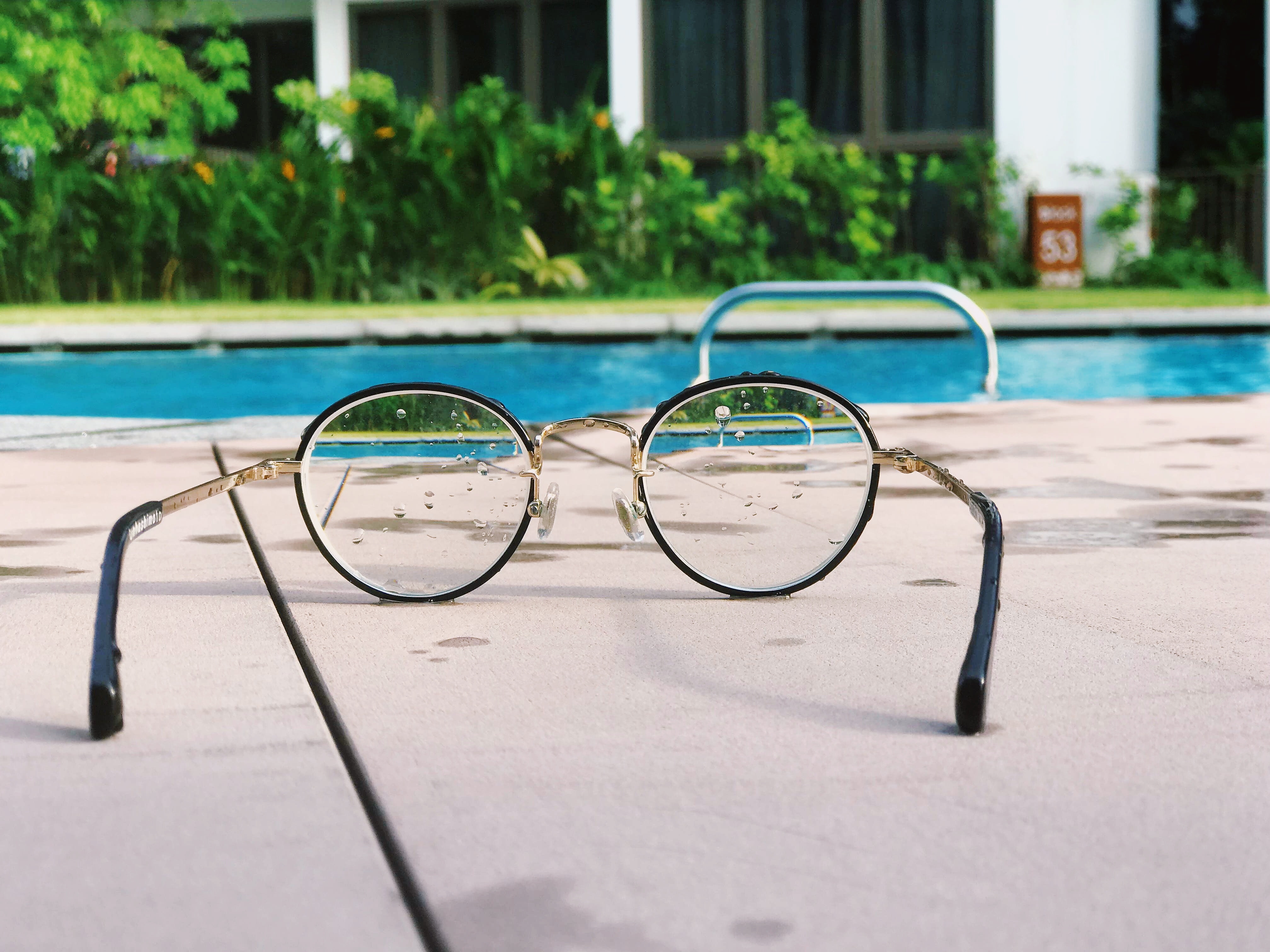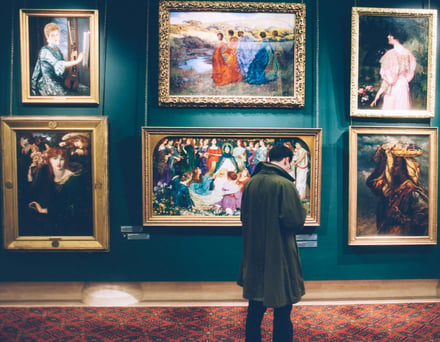Why a drag & drop image editor doesn’t work for your brand?
While Canva or Bannersnack allows you to play the designer via drag & drop, a subjective design process can be inefficient leading to undesirable...
Wait. Am I supposed to make a decision that will result in people engaging with the visual or not? Do they really think I know what the people's reaction will be? How do I make a joke that makes everybody laugh? With over 7 billion people in the world and at least as many senses of humor, it’s an overwhelming challenge… but of course, I will create something that we will be able to publish – said the guy that is responsible for next week’s ads on social media and he got to work.
You might be wondering – is it going to be an ad created based on objective research or a visual representation of what he thinks is appropriate to communicate? Furthermore, will the advertising be received with objectivity?
Let’s dig deeper into the topic.
Objective: expressing or dealing with facts or conditions as perceived without distortion by personal feelings, prejudices, or interpretations.
Subjective: peculiar to a particular individual; modified or affected by personal views, experience, or background.
Definition by Marriam-Webster

Humans are emotional creatures and it’s extremely hard to separate the work we perform from the various feelings we have toward it. Of course, many people are trained or try to train themselves not to become personally involved in what they do – in order to perform better in stressful jobs or to produce outputs that are free from subjective accents. However, the mystery of what really happened in their heads during the act of creation is… a puzzle that can probably be solved with complicated psychological tools.
What we know for sure – they are not machines and unless we live in the world from the movie, Equilibrium – their artistic expression is alive.
Throughout their professional careers, experienced graphic designers have gained knowledge on what appeals to people and how to base the content they create for a particular audience’s characteristics. They are undoubtedly closer to the target of making objective decisions – somewhere around the modern advertising bulls-eye. But… what about everybody else, trying their best to cross the triple ring? And what about the remaining percentage of subjectivity that even great graphic designers can’t overcome? The truth is that brands are usually born way before the company has a marketing budget big enough to pay for professionals to create any visually appealing campaigns. Small business owners and marketing people spend hours on figuring out how to manage their Creative Cloud and make it rain. They either have initial successes, grow the company and are finally able to send their brief somewhere else than to their own mailbox – or discover that the investment they made did not pay off, because their ads simply did not work.
 Both art and design share the same fundamentals such as composition and proportions, but there is one essential difference between these two – the motivation behind the creative process. An artist strives to manifest his thoughts and feelings, the recipient of such message is basically non-existent to an artist. He just wants to express what is hidden deep in his heart and whoever is exposed to it – is a good person to reach. A designer, in turn, serves the viewer and weights his visual words to effectively speak to a particular target audience.
Both art and design share the same fundamentals such as composition and proportions, but there is one essential difference between these two – the motivation behind the creative process. An artist strives to manifest his thoughts and feelings, the recipient of such message is basically non-existent to an artist. He just wants to express what is hidden deep in his heart and whoever is exposed to it – is a good person to reach. A designer, in turn, serves the viewer and weights his visual words to effectively speak to a particular target audience.
“But design is so creative!” – you think. Of course, it is, but not entirely. There are many types of design – from a very functional approach to an artful one. The latter carries a lot of subjective decision-making burden which simply can’t be denied. Therefore, it is the process that differs in comparison to art, and this process is very not art-related.
The design process is valued based on whether it brings tangible results for a brand – in the opposite to art which is valued for its originality and the emotions it wakes in spectators.
We have all agreed on the fact that, in advertising, graphic design serves people, or rather the intended audience that is exposed to a campaign. Ideally, the creative process should be strictly focused on what people truly need and want, and on how they perceive particular things. How to achieve it? Well, the creation needs to be about everything but the designer’s own style and visual preferences. Instead, the decision-making needs to be informed by data, while continuously validating the decision. In order to say that a particular design is successful, we need numbers proving real results for a brand – it can be raising brand awareness, achieving a higher conversion rate, or many other measurable indicators.
User research focuses on understanding user behaviors, needs and motivations through observation techniques, task analysis and other feedback methodologies. (…) it is “the process of understanding the impact of design on an audience.”
Definition by Usability.gov
The important purpose of user research efforts is the deep understanding of how to create designs that will be engaging in the eyes of humans. In other words, it seeks ways to help graphic designers and other decision-makers make more objective decisions by understanding what impact design has on an audience. As business goals are essential in the ad design processes, people creating them need to comprehend those goals and be able to translate them into a ready output. As we have already stated, these processes are a series of decisions and, unfortunately, content, like Effective Visual Design for Dummies– A Complete Tutorial, has yet to prove its worth when it comes to making each effective visual. Instead, there is a fair percentage of flexibility which makes humans tend to turn a little to their subjective side. Gradually decreasing the percentage of subjectivity and creating goal-driven and data-driven designs is something that comes step by step with experience in the industry.
Assessing whether designers and other professionals creating ads are objective enough is a topic that leaves a lot of room for discussion. Meanwhile, the other side of this process – recipients – are not that hard to describe and we are going to give them just one adjective – subjective, very subjective.
Subjectivity drives people’s feelings about the world around them. They depend on their own aesthetic tastes to receive various messages to which they are exposed. All principal factors that have an impact on consumers’ purchasing decisions are subjective – including advertising reception. Two different persons can interpret the same ad in a contrasting way – one of them laughs when the other one gets offended which makes this topic so interesting to investigate. Ad creators are performing a Sisyphean task of using as much objectivity as they can to create outputs that might as well be read in almost as many ways as the number of viewers.
What ad creators need to remember is that potential customers certainly don’t share their motivations and tastes.
Experience is what brings them closer to making objective decisions about what is a good solution for a particular case – taking both people’s perceptions and the client’s briefs into consideration. Everybody applies an element of personal preference into creating visuals (or describing what they want graphic designers to create) and approving them to the public. Here comes the big question – who is competent enough to assess which visual is right to use and which one is wrong? In every case, with regard to every group of target audience?
Being aesthetically functional is the ideal adjective that should describe visuals used in advertising. It is true, there are many different types of ads that need a very different level of out-of-the-box creativity to surprise viewers. However, there are also many others, which simply need people to click on them – to trigger their customer journey onwards elsewhere. But if human emotions are essential in deciding whether to engage with an ad, how do we use raw objectivity to make it happen is a million-dollar question. Without psychology and raw data, it is a very complex guessing game in which designers have more chances at winning when their experience is broader, but it might be just this – anything close to certainty. The process behind artful outcomes is full of numerical factors and patterns of behavior to analyze and should be driven by objective reasoning.
The potential answer is algorithms which through constant machine learning, can replace undesirable subjectivity and move subjectivity to other areas where that type of creativity has more room to show off. It is mostly true with regard to repetitive ads on social media platforms, as well as online banners which require more simple design, but a lot of data behind it – to understand users’ potential perception and help brands achieve their business goals.
Although art and graphic design happen to have similar outcomes, they are driven by very different processes employing different levels of subjectivity. Graphic designers, as well as people who deal with the ad creation process without professional help, need to cultivate objectivity and use it in their decision-making processes to achieve desired business goals. It is practically impossible for an audience to have the same taste as somebody behind an ad, so instead of personal preferences, data should be used to produce aesthetically functional outcomes. So far, various innovative solutions are trying to make these processes more and more objective and things are changing in the industry. Whether data-driven design will start to replace the one performed by humans in some areas forms an interesting question and it is worth waiting to discover the answer.
Data-driven design is still quite a futuristic topic for many people. It makes us think about the future - and wonder in which direction it will take the whole advertising industry. We have expressed our predictions about the future of advertising in one of our articles here.
While Canva or Bannersnack allows you to play the designer via drag & drop, a subjective design process can be inefficient leading to undesirable...
Dipp aims to transform visual design process into a scientific one through design analysis and automation as we head into the future of automation.
The most important peak in e-commerce performance worldwide is the last three months. SEA is no different, with 40% of online sales happening at that...
Be the first to know about new B2B SaaS Marketing insights to build or refine your marketing function with the tools and knowledge of today’s industry.